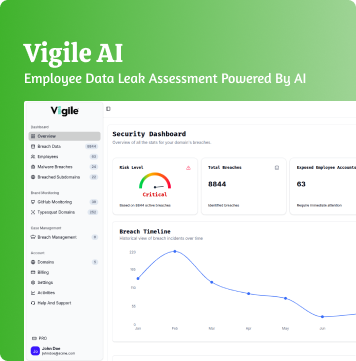
If you think a leaked password is “no big deal”, think again. In the underground economy of cybercrime, leaked credentials are digital gold; a gateway into your systems, your customers, and your reputation.
Every day, millions of usernames and passwords are dumped or sold on the dark web. Once your credentials are out there, they don’t just vanish; they circulate, evolve, and multiply through hacker networks. So, what exactly happens after your login data is exposed? Let’s pull back the curtain.
Step 1: Data Harvesting Begins
Hackers start by collecting huge datasets from public breaches, phishing campaigns, and malware infections. They use automated scripts to aggregate leaked credentials from multiple sources, creating massive combo lists that often include email addresses, passwords, and sometimes even API keys or session tokens.
These lists are then categorized by industry or region, making it easier for attackers to target specific companies or sectors.
Step 2: Credential Stuffing Attacks
Once the data is organized, hackers turn to one of their favorite tools: credential stuffing. Because many users reuse passwords across multiple platforms, a single leaked password from a social media account can unlock corporate emails, cloud dashboards, or payment systems.
With automation tools, attackers can test millions of username-password combinations in minutes. Even a 1% success rate can mean hundreds of compromised accounts; a jackpot for cybercriminals.
Step 3: Privilege Escalation and Lateral Movement
After gaining access, hackers rarely stop at one account. They explore internal systems, steal more credentials, and look for ways to escalate privileges; sometimes even creating new admin accounts to maintain stealth access.
From here, they can exfiltrate data, manipulate financial systems, or deploy ransomware. It’s a silent invasion that often goes undetected for weeks or months.
Step 4: Selling and Recycling Stolen Data
Not every hacker wants to exploit your systems directly. Many simply sell your credentials on dark web marketplaces. These credentials can be reused by other cybercriminals for new attacks from spear-phishing to identity theft.
The same set of leaked logins might circulate for years, resurfacing in future breaches and fueling endless waves of cyberattacks.
Step 5: The Domino Effect
A single set of leaked credentials can cause cascading damage. Once attackers infiltrate your systems, they can impersonate employees, manipulate invoices, or steal customer data, eroding trust and costing millions in recovery efforts.
How to Stop Them
Here’s the good news; you can stop this cycle.
- Use multi-factor authentication (MFA) to render stolen passwords useless.
- Monitor for data leak signs across the dark web and breach databases.
- Rotate passwords regularly and enforce strong password hygiene.
- Conduct continuous penetration testing to find vulnerabilities before attackers do.
Don’t Let Hackers Stay One Step Ahead
Your credentials are the keys to your business. Once they’re leaked, they can open more doors than you realize. The best way to prevent that? Stay proactive.
At Vigile.AI, we help organizations detect, monitor, and protect their digital assets from credential-based threats. Our AI-driven dark web monitoring and cyber threat intelligence solutions empower companies to act before attackers do.
Protect your business before the next breach hits. Start your proactive defense today with Vigile.AI and stop hackers in their tracks.



